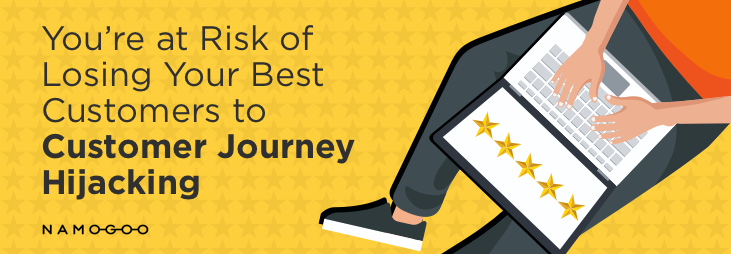As Customer Journey Hijacking increasingly impacts online retailers, there is a growing awareness of ad injections and how they steal customers away and damage brand reputations, resulting in lost eCommerce revenue. But many people assume that the online visitors most affected by this consumer-side problem are less tech-savvy and less likely to spend significant money online.
In fact, the numbers show that just the opposite is true: The consumers who have the highest eCommerce KPIs are far more likely to have ad injections running on their browser or device.
Namogoo’s analysis of more than one billion web sessions per week shows that consumers who spend more time (and money) shopping online are more likely to download free software such as browser extensions and mobile apps – many of which come pre-bundled with ad injections.
How do these ads impact the customer experience? First, ad injection software running on the shopper’s device tracks their online activity, building a personal profile of their shopping preferences, habits, and other characteristics. Then, when that user visits an eCommerce website, they are served with individually targeted pop-ups, banners, and product ads promoting other companies (typically competing online stores). In addition, the shopper may be subjected to in-text redirects that automatically take them to a different website than the one they intended to visit.
How do we know the most valuable customers are most affected by ad injections?
The realization that the customers most affected by Customer Journey Hijacking tend to have the highest KPIs is nothing new. But our data from 2018 shed light on this phenomenon. Here are a few highlights from Q4 of last year:
- The companies we work with saw their unaffected desktop visitors (those not impacted by injected ads) have a conversion rate of 2.22%. During the same period, recovered desktop visitors (those previously hijacked by injected ads now being blocked by Namogoo) had a conversion rate of 5.20%.
- On mobile, these companies saw unaffected visitors register a conversion rate of 0.98%, while their recovered visitors had a conversion rate of 2.46%.
- While average visitors not affected by ad injections showed a checkout abandonment rate of 59.21%, recovered visitors had a checkout abandonment rate of 49.39%.
And it’s not just our aggregate data that show this pattern in which hijacked visitors show more value than the rest of their traffic. In fact, it’s common for companies we work with to find that even their customers who are still being subjected to unauthorized ads have higher KPIs than their unaffected customers – and once those ads are blocked, these customers’ KPIs rise even higher.
This was exactly the pattern that Deckers Brands, the owner of Teva, saw when Namogoo performed a proof of value (POV) on Teva.com.
“We saw a higher rate of hijacked traffic than we initially thought,” recalls Nicolas Smotek, Deckers’ Director of Omni Digital Technology and UX. “It was interesting to see that this particular group of traffic converted higher than our normal traffic and that when we blocked the ads for this group they converted even higher.”
Indeed, once Namogoo blocked these injected ads, Teva.com saw a 1.78% increase in its overall conversion rate (not just the conversion rate for hijacked visitors). And when these ads were blocked for users of UGG.com, that site saw a 2.43% increase in its overall conversion rate.
Why is this pattern such a problem for online retailers?
If you have an online store, there is an obvious reason to be concerned about which of your customers are most likely to be affected by Customer Journey Hijacking: These invasive ads are proven to lower companies’ overall conversion rates by between 1.5% and 5%, reducing revenue per visitor by between 5% and 7%. If your sales to your best customers are being hindered most of all, that’s clearly going to have an impact on your revenue.
But there’s an even bigger problem with Customer Journey Hijacking: Repeat customers are an important source of revenue – and every time one of your customers gets redirected to one of your competitors’ websites, there is no guarantee that customer will come back to your store. In fact, our study of more than 1,300 consumers found that 80% of consumers say that if they are diverted from one online store to another and then make a purchase in the second store, they are more likely to return to the second store the next time they want to make a similar purchase.
In other words, the problem with Customer Journey Hijacking isn’t just that it affects between 15% and 25% of visitors to your online store, injecting ads that can divert them to your competitors. The bigger problem is that these ads are most likely to impact the purchase decisions of those consumers who offer you the most potential for profitability, both today and tomorrow.
For a closer look at the latest trends in the world of injected ads, download The State of Customer Journey Hijacking 2018. And to see how Customer Journey Hijacking affects your online store, you can get a free website analysis






